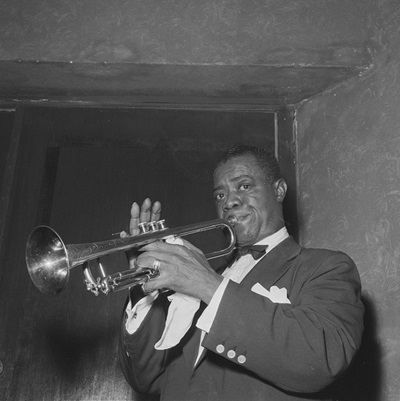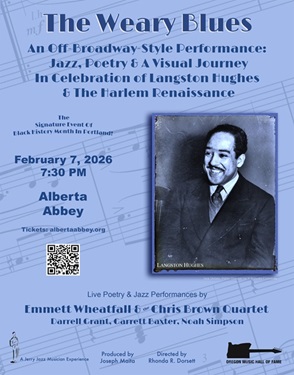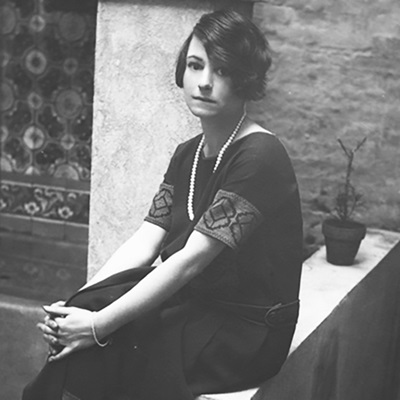“Father Kniest, Jazz Priest” is a short story by Con Chapman about “a man of the cloth…deputized by a higher power to save jazzmen’s souls from the lures and wiles and temptations of bad taste.” It is published with the permission of the author.
*

Con Chapman is a Boston-area writer, the author of two novels and “The Year of the Gerbil,” a history of the ’78 Red Sox-Yankees pennant race. His writing on jazz has appeared in Punchnel’s and Brilliant Corners, among other publications. He is working on a biography of Johnny Hodges.
______________________
Father Kneist, Jazz Priest
by
Con Chapman
I’m getting too old for this, I thought as I made my way down Boylston Street, my tambourine in one hand, the Good Book in the other. I started ministering to the jazz scene in Boston back when Estelle Slavin and Her Swinging Brunettes were the house band at Izzy Ort’s Coney Island Club on Essex Street. Floogie Williams and the Unquenchables were ensconced at the Tip-Top Lounge, which didn’t sit well with the sconces that came with the place as trade fixtures, but so what? We were young and crazy for jazz — we didn’t care.
But now I’m closing in on eighty, and eighty’s looking over its shoulder, nervous as hell. I’ll catch it soon enough — if I don’t die first.
Back in ’55 I was just out of the seminary and was assigned by my religious order — the Congregation of the Hep — to Boston, one of the most Catholic cities in America, and always viewed as nothing more than a stepping stone. Cats in Boston lived in an existential no-man’s-land; always doubting whether they were any good as long as they stayed in Beantown instead of moving on the Big Apple. To them, I was Father Kniest — Jazz Priest.
Like The Disgruntled Threesome — “Buzzy” Drootin, Sparky Tomasetti, Cas Brosky. Man, those guys could swing. The name was facetious, of course; if you came into Wally’s Wigwam in a disgruntled mood, those guys would have you completely gruntled by the time they’d finished “Muskrat Ramble” the second time.
But all that’s in the past, in the semi-glory days of Boston jazz. Now, I’m reduced by fifty years — a half century! — of rock, folk, disco and rap to trying to save a few forlorn souls from eternal damnation.
I pass by a soprano sax player in Dewey Square, or “Financial Center” as some urban planning goober decided to re-brand it in the 80’s. He’s playing “Chim Chim Cheree,” among other schmaltz-laden Disney tunes. I know the guy’s just trying to survive, but so are the hookers down on lower Washington Street — that don’t make it right.
I step out of the herd of faceless commuters making their way to South Station for the train ride to the suburbs, and pull a $5 bill from my pocket. The man says “thank you” without taking his mouth off his reed so he can keep the cash flowing, but I dangle the sawbuck in front of his face without letting it drop to let him know I’ve got something I need to say to him.
“I need to talk to you, man,” I say, and he finally stops playing.
“Really, thanks a lot, I . . .”
“You don’t get it,” I say with the seething demeanor Jesus must have taken on right before he threw the money changers out of the temple.
“What?”
“I’m paying you to stop . . . not keep going.”
“But . . . I won’t make any more money that way.”
“Yes you will, if you’ll stop playing that crap and switch to something worth the breath it takes to play it.”
“Like what?”
“If you play ‘Cherokee’ there’s another fin in the wallet where this one came from.”
His eyes light up. “Heck YEAH, man,” he says, and he launches into a creditable rendition of the Ray Noble classic. I drop two fives into his instrument case, nod my head as I give him a look of commendation, and I’m off to rescue another frail reed about to break beneath the burden of a culture that doesn’t appreciate his art.
It’s over to La Fisherie, an upscale restaurant in “Copley Place.” I can only shake my head at that solecism. Copley Square was already a place, the aorta of the heart of Boston jazz. It was here that Leonard “Dizzie” Groot joined forces with Bunny “Fred” Buchanan and Tommy “Flip” Phlegman to come thisclose to getting a contract with Verve that coulda shoulda woulda made them stars in the same constellation as The Dorsey Brothers.
But no. A cold sore hampered Bunny/Fred the night the A&R man from New York came to town to hear The Jazz Nocturnals at Mert’s Playland; by the second set his lip was bleeding and he could barely manage “In the Mood.” The guy from the record company got lost on the subway, like Charlie on the MTA. He didn’t know that there’s no inbound/outbound transfer at Copley, and he didn’t know that you pronounce the name of the place with a short “o”; it’s COP-ley as in “Cheez it-the cops!” — not COPE-ley, as in “I can’t cope with you any more, Laverne.”
There’s still one jazz venue left in the Square; the somnolent, soporific Swank Room in the basement of a Class B hotel where a Red Sox relief pitcher took his own life back in the 50’s, setting off a massive manhunt on the part of the ball club’s management to recover his $3.50 per day meal money.
I tread gently down the dimly-lit steps and see a scene that would break any self-respecting jazz man’s heart; there’s four, maybe five tables occupied, one by Lydia Tournquest, “society” columnist for The Back Bay Schooner, a relic of a bygone era before the MassPike made it easy to commute to the suburbs and drained the city of adults with a recollection of what jazz once sounded like, and the pocket money to pay for it.
On the bandstand is Wilson “Chet” Forskett, a Berklee student who’s wailing on alto sax; he’s chasing the Bird, playing an easy-swinging “Yardbird Suite” with enough invention to keep you listening while still tapping your feet to the Kansas City beat. I’m almost ready to get excited-is this the Second Coming of Boston Jazz?-when he ends on a mellow note and draws scattered applause.
Down front a mismatched couple-he’s wearing a toupee, her burgeoning breasts are about to spill out of her scoop neck-takes it all in with a knowing, somewhat superior air. Why not? They sprang for the $19.95 Veal Scaloppini Avec Porcini Mushrooms-the name of the dish is like a mini-United Nations Security Council.
They put their hands together in restrained admiration-probably don’t want to get the kid’s hopes up for a tip-and the woman speaks.
“Excuse me,” she says to the sax man.
“Yes?” he replies.
“Do you know “Lady,” by Kenny Rogers?”
The young man bites his lower lip but not, I think, because he can’t recall the changes.
“No ma’am, I’m afraid we don’t.” I know what he’s thinking: he’s drunk the milk of Paradise, like the man in Coleridge’s Kubla Khan — the paradigm shifting music of bebop; he’s not going back to Classic Country.
“Aww, that’s a shame,” the woman says. I think I’ve got these two figured out. Mr. Hair Club for Men is her boss, she’s his secretary. How — sordid!
“Sorry,” the budding jazz man says.
“You should learn it,” the woman says. “It’s really beautiful!”
I see the kid’s neck stiffen; he’s trying to keep from shaking his head.
“Well, uh, sheet music is expensive,” he says.
“That’s okay — I can hum it for you, and you can fake it,” the woman says. She clears her throat — should’ve got that flu shot, I think to myself — takes her long-stemmed red rose in hand and begins to emote.
“Lady,” she sings in a husky contralto, “I’m your knight in shi-i-ning armor!”
“Stop!” I yell as I make my way down front. “Stop it before you infect this young man with whatever pop virus has corrupted your brain!”
“Hey — don’t talk to her like dat!” the man says. Now that I’m up close, I see that I’ve judged him unfairly; his hair’s real, only it’s combed over from a point just above one ear all the way over to the other. He looks like a Georgia cotton field infected with kudzu.
“I’m a man of the cloth, pal. I’m deputized by a higher power to save jazzmen’s souls from the lures and wiles and temptations of bad taste.”
“I have bad taste?” the woman says. Apparently no one’s ever leveled with her before.
“Abso-freaking-lutely,” I say, drawing myself up to my full 5’10” height.
“I thought the rule was ‘Cha-koon o sone gout’,” the man says. “To each his own.”
“Nope,” I reply with authority. “There are certain immutable laws of beauty, and your ‘lady’ here is a veritable one-woman aesthetic crime wave.”
“How do you know she’s got bad taste?” the man asks, a bit miffed at my condescension.
“Easy,” I say. “She’s with you.”
_____
Another story by Mr. Chapman, “Masters of the Jazz Kazoo,” will be published in the near future
*
Click here for details on how to submit a story in our next Short Fiction competition
















































Loved it! Looking forward to “Masters of the Jazz Kazoo”.
Well done, and the ending had me howling 😀
Well done, and the ending had me howling 😀